Safety Instrumented Systems (SIS) play a critical role in ensuring the safety and reliability of industrial processes, particularly in high-risk sectors such as oil and gas, chemical manufacturing, power generation, and nuclear energy. SIS is a crucial layer of protection that automatically intervenes when abnormal or hazardous conditions are detected, mitigating risks to people, equipment, and the environment. This article explores the concept, components, standards, and applications of SIS, highlighting its importance in industrial safety.
What is a Safety Instrumented System (SIS)?
A Safety Instrumented System (SIS) is an independent system that monitors industrial processes and activates predefined safety functions when a hazardous condition is detected. The primary objective of SIS is to prevent or mitigate dangerous events, such as explosions, equipment damage, or chemical releases.
SIS typically works alongside other systems, such as Distributed Control Systems (DCS) and alarms, but it remains functionally independent to ensure reliability. While the DCS controls the process to achieve operational goals, SIS focuses solely on safety by providing an additional layer of protection.
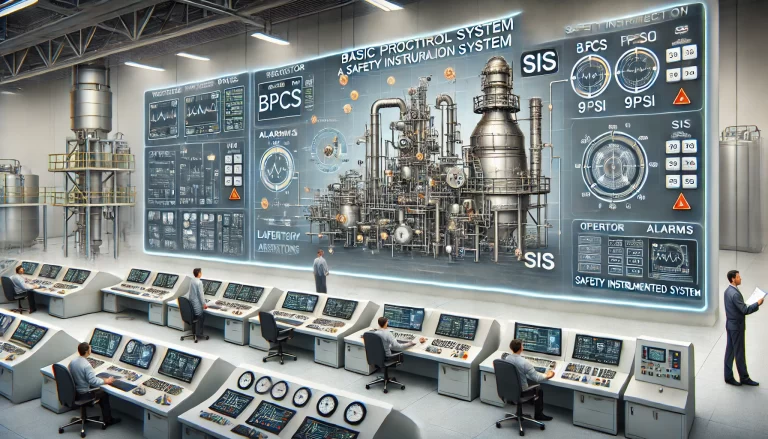
Key Components of SIS
A Safety Instrumented System consists of three essential components, which form the foundation for its operation:
Sensors (Input Devices):
Sensors monitor critical process variables such as pressure, temperature, flow rate, and level.
They continuously detect deviations from safe operating limits and send signals to the logic solver.
Logic Solver (Control Processor):
The logic solver processes input signals and determines if a safety action is required.
This component uses programmable logic controllers (PLCs) or safety relays to execute safety logic based on predefined criteria.
Final Elements (Output Devices):
Final elements act to mitigate hazards, typically by stopping processes or isolating dangerous conditions.
Common final elements include emergency shutdown valves (ESD), venting systems, pumps, and motors.
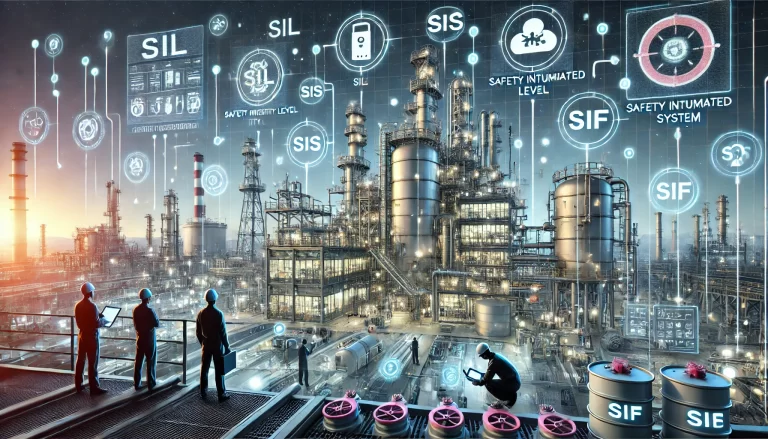
How SIS Works: The Safety Lifecycle
The implementation of SIS follows a systematic approach known as the safety lifecycle, as defined in international standards such as IEC 61508 and IEC 61511. The safety lifecycle ensures that SIS is designed, implemented, operated, and maintained to achieve a specified level of safety integrity.
Hazard and Risk Assessment:
Identify potential hazards and evaluate associated risks.
Determine which safety functions are necessary to reduce risks to an acceptable level.
Safety Requirements Specification (SRS):
Define the safety functions and performance requirements for the SIS.
Design and Engineering:
Design the SIS architecture, ensuring that hardware and software meet the required Safety Integrity Level (SIL).
Implementation and Testing:
Install and commission the SIS.
Conduct rigorous testing to verify that the system meets the SRS.
Operation and Maintenance:
Regularly monitor and test the SIS to ensure it continues to perform reliably.
Perform periodic assessments to verify compliance with safety standards.
Decommissioning:
Safely retire the SIS when it is no longer required or has reached the end of its lifecycle.
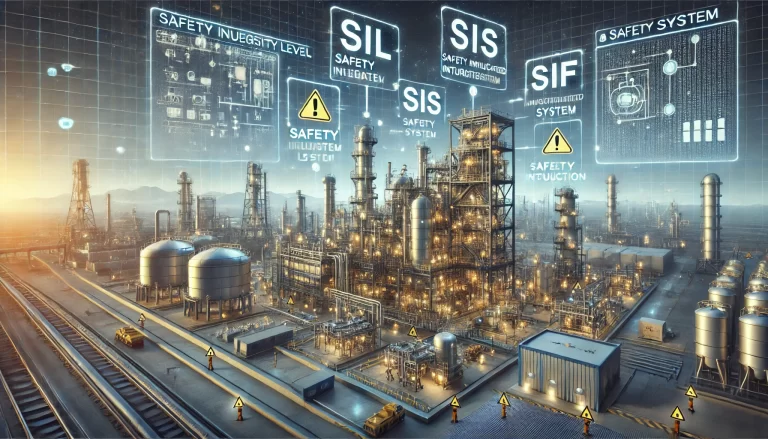
Safety Integrity Level (SIL)
The Safety Integrity Level (SIL) is a critical metric for evaluating the reliability and performance of an SIS. SIL is defined in IEC 61508 and ranges from SIL 1 to SIL 4, where SIL 4 represents the highest level of reliability. The SIL level is determined based on the required risk reduction and probability of failure on demand (PFD).
| SIL Level | Risk Reduction Factor (RRF) | Probability of Failure on Demand (PFD) |
|---|---|---|
| SIL 1 | 10 to 100 | 10-1 to 10-2 |
| SIL 2 | 100 to 1,000 | 10-2 to 10-3 |
| SIL 3 | 1,000 to 10,000 | 10-3 to 10-4 |
| SIL 4 | 10,000 to 100,000 | 10-4 to 10-5 |
The SIL level dictates the design requirements for the SIS, including redundancy, fault tolerance, and diagnostic capabilities.
Key Standards for SIS
Several international standards govern the design, implementation, and operation of Safety Instrumented Systems:
IEC 61508:
The foundational standard for functional safety across all industries.
Defines the safety lifecycle and SIL levels.
IEC 61511:
A sector-specific standard for the process industry.
Provides practical guidelines for implementing SIS in chemical, petrochemical, and other process facilities.
ANSI/ISA-84.00.01:
The U.S. version of IEC 61511, widely adopted in North America.
These standards ensure consistency, reliability, and compliance in SIS implementation.
Applications of SIS
Safety Instrumented Systems are essential in high-risk industries where process failures can result in catastrophic consequences. Key applications include:
Oil and Gas Industry:
Emergency shutdown (ESD) systems to isolate equipment during leaks or overpressure.
Fire and gas detection systems for early hazard identification.
Chemical and Petrochemical Industry:
Reactors and storage tanks equipped with SIS to prevent overtemperature and overpressure conditions.
Power Generation:
Boiler protection systems to prevent explosions or equipment damage.
Nuclear Energy:
Reactor shutdown systems to ensure safe operation and emergency response.
Pharmaceutical and Food Industries:
Ensuring safe temperature and pressure controls during production processes.
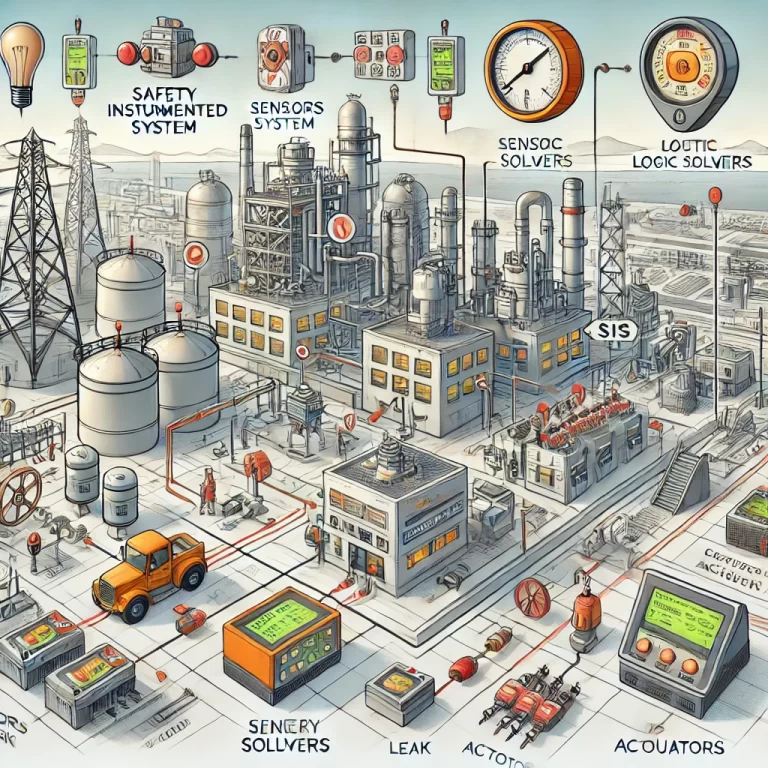
Advantages of SIS
Implementing a Safety Instrumented System offers several key advantages:
Enhanced Safety:
Reduces the likelihood of catastrophic failures, protecting personnel, equipment, and the environment.
Regulatory Compliance:
Ensures compliance with international and industry safety standards.
Increased Reliability:
SIS is designed with redundancy and fault-tolerant mechanisms to ensure high availability.
Risk Reduction:
Provides a quantifiable means to reduce operational risks to an acceptable level.
Improved Process Integrity:
Minimizes unplanned downtime by preventing unsafe conditions.
SIS vs. DCS: Key Differences
While SIS and DCS often work together in industrial environments, they serve different purposes:
| Feature | SIS | DCS |
| Primary Objective | Safety Protection | Process Control |
| Independence | Independent and isolated | Integrated with process control |
| Reaction Time | Fast, immediate response | Optimized for operational goals |
| Standards | IEC 61508, IEC 61511 | General process control standards |
| Redundancy | High fault tolerance and redundancy | Standard redundancy options |
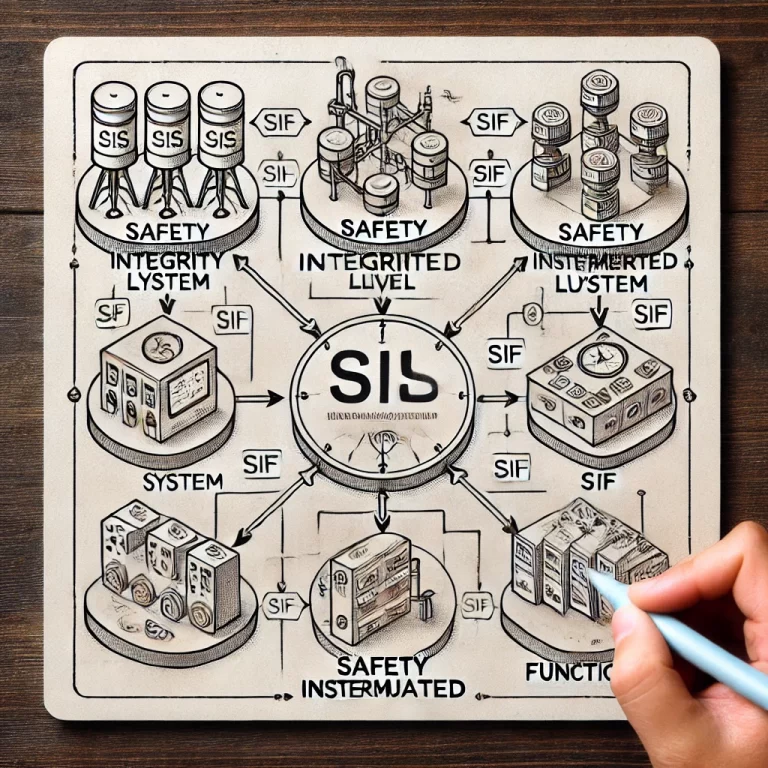
Conclusion
Safety Instrumented Systems (SIS) are a cornerstone of industrial safety, providing an independent and reliable layer of protection against process hazards. By monitoring critical parameters and automatically triggering safety responses, SIS ensures the safety of personnel, equipment, and the environment. Adhering to international standards such as IEC 61508 and IEC 61511 ensures that SIS is designed, implemented, and maintained to meet the highest safety requirements. In industries where the consequences of failure are severe, SIS remains an essential safeguard to reduce risk and enhance operational integrity.
